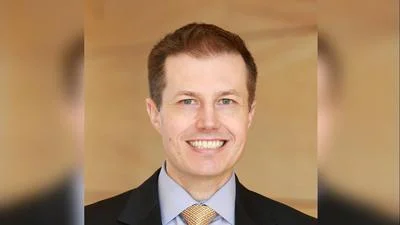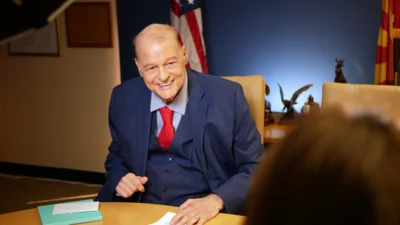Arizona State University, Tempe, Main Campus | Arizona State University
Arizona State University, Tempe, Main Campus | Arizona State University
Arizona State University's (ASU) commitment to teaching students how to make a far-reaching social impact can be seen in its Gender, Women and Sexuality Studies curriculum, which, an analysis found, contains a number of courses that examine gender and sexuality in social justice contexts and place an emphasis on intersectionality. The analysis also found that ASU also has strict protocols and special resources in place to protect and uplift LGBTQIA+ members of ASU's community. As a public university, ASU receives hundreds of millions of dollars in state funding, and the annual cost for first-year students ranges from $36,000 to $54,000.
ASU's Gender, Women and Sexuality Studies BA program is part of ASU's School of Social Transformation. "Grounded in intersectional feminism, students will gain valuable insight on how the systems of inequality intermingle with race, gender, sexuality, immigration, class, globalization, and other frameworks. Undergraduates gain necessary expertise in applying this knowledge to today's society," according to the program's description.
There is also a BS program in Gender, Women and Sexuality Studies at ASU's New College of Interdisciplinary Arts and Sciences. In this track, "Students examine the cultural and social construction of gender; explore the history, experiences and contributions of women to society; and study the influences of gender at a micro and macro level." As is the case with the BA program, the BS program has a strong social justice component: "the program's course offerings, research initiatives and cocurricular programs further the understanding of women and gender and promote social justice. Students gain a solid knowledge base and educational foundation as well as the critical thinking skills necessary for dealing with changing gender roles in society."
For ASU students who are part of the 2SLGBTQIA+ community and are in need of support and affirmation, ASU helpfully provides a list of more than 100 "Out and Proud" faculty and staff "who are excited to support Queer and Trans students." In order to help 2SLGBTQIA+ find the right support person, people on the list share their pronouns and sexuality and/or gender identity as well as other defining characteristics if applicable. For example, ASU's Assistant Director of Career Services describes himself as a queer, polyamorous, pansexual neurodivergent, bipolar artist, while an ASU design expert and facilitator is a queer pansexual Canadian Mennonite.
The course catalog for the Women's Studies program features a number of courses that allow students to plumb the depths of gender and sexuality. For example, the Critical Perspectives on Sexuality course "examines critical theories of sexuality, including history, commerce, pleasure, LGBT issues, identity, medicalization of sexuality, disorders, sex crime, and pornography."
Another course, Race and Sexualities in Social Justice Movements, "investigates queer communities, social control and political resistance. Topics include collective responses to trauma/violence, heteronormativity, and variants of institutionalized racism and sexism. Gives special attention to race and sexuality intersections as well as the politics of coming out, LGBT activism, antiracist movements, the role of allies, and social movement strategies."
Students who take the Queer Studies course will engage in "In depth exploration of lesbian, gay, bisexual, transgender, and queer experiences in the U.S. and globally, from an interdisciplinary perspective."
The Transborder Queer Performativity course "explores a rich and diverse body of border-crossing performative expression created by queer and/or Latina/o artists. Course readings and discussions include solo and collaborative works with an emphasis on solo autobiographical performance scripts as well as performer interviews and performance scholarship."
Gender, Sexualities and Literacies offers students a chance to contemplate gender theory as it pertains to people of all ages, including preschoolers. The course "presents diverse perspectives on gender, sexualities and literacies from preschool to adulthood. Focuses on race, ethnicities, sexual orientation and gender identities to provide overviews of current research on gender, sexualities and ethnicities and examines how these subjectivities are expressed in multiple modes of communication. Explores representations and performances of gender and sexualities through literacy practices in sociocultural and educational contexts. Explores related issues through textbook readings, videos, websites, activities, online discussions and projects."
According to the University's academic regulations, ASU requires that undergraduate students pursuing a bachelor's degree fulfill the General Studies requirement, as "the General Studies requirement complements the undergraduate major by helping students gain mastery of critical learning skills, investigate the traditional branches of knowledge, and develop the broad perspective that frees one to appreciate diversity and change across time, culture and national boundaries." In order to fulfill the General Studies requirement, students must take a certain number of credit hours in each of five "core areas" as well as complete courses that satisfy "three awareness areas." A number of courses in the Women's Studies department would satisfy these criteria.
ASU is committed to educating students not just academically but also on a societal level. Having a profound social impact is a top priority at ASU. ASU prides itself on "[exemplifying] a new prototype for the American public research university." To that end, in 2014, ASU adopted their current charter, which includes, among other things, "assuming fundamental responsibility for the economic, social, cultural and overall health of the communities it serves."
ASU boasts that its Center for the Study of Race and Democracy (CSRD) is "the only entity at ASU and in the state of Arizona to position race and democracy in direct relation with each other." According to ASU, "The Center is known within and beyond the university for its spirited and innovative programming on issues of race, democracy and the known and understudied impact of systemic and institutional racism and undemocratic practices," and it is "a destination for those determined and willing to grapple with pressing issues such as equity in education, health, and housing; race, gender and civic discourse; race, place and public memory, and emerging technologies of democracy."
Additionally, in order to help students, faculty, and staff grapple with pressing issues like gender and civic discourse, ASU provides a guide on gender pronouns — including, but not limited to, (f)ae, ver, xyr, eirs, and perself — and how to use them. Proper pronoun usage is imperative, according to ASU, because "when someone is referred to with the wrong pronoun, it can make them feel disrespected, invalidated, dismissed, alienated, or dysphoric (often all of the above.) It is a privilege to not have to worry about which pronoun someone is going to use for you based on how they perceive your gender. If you have this privilege, yet fail to respect someone else’s gender identity, it is not only disrespectful and hurtful, but also oppressive."
ASU has also put together an 11-page faculty guide on "Transgender student inclusion in the classroom" developed by a group of trans students and allies. The guide advises that "by using inclusive language and practices in your classroom, you will be fostering a more engaging environment that will make your [trans] student feel both safe and welcomed. You will also set a positive example for cisgender students in your classroom. Our hope is that by using this guide, more faculty and staff will attune to the importance of transgender inclusion in the classroom and realize the positive impact that these efforts will have on our campus and the wider ASU community." The guide features a discussion on the perils of misgendering students and a glossary of terms.
The estimated cost to attend Arizona State University (in person) for an Arizona resident first-year student in the 2023-24 academic year is $36,103. For an out-of-state resident first-year student attending in person, the estimated cost is $53,877. These cost estimates include tuition and fees, on-campus housing and food, books and supplies, travel, and personal expenses.
In the fiscal year ending June 30, 2022, $385.5 million—14 percent of total revenue—came from state appropriations, according to ASU's 2022 comprehensive financial report.
According to the American Association of University Professors' 2022-23 Faculty Compensation survey, ASU's salaries for full professors, associate professors, and associate professors are $161,900, $113,400, and $92,100, respectively.






 Alerts Sign-up
Alerts Sign-up